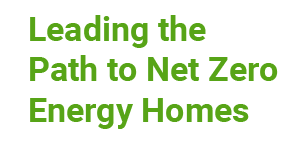There is an emerging business opportunity for certified RESNET Home Energy Raters with multifamily buildings. The U.S. multifamily housing stock is aging. The Harvard Joint Center for Housing Studies estimates that the average age of the nation’s multifamily housing stock is 38 years. This means that there are many opportunities for making cost effective energy upgrades to multifamily buildings. Aging multifamily housing and increasing energy costs also provides an opportunity to preserve affordable housing.
Fannie Mae is a key player in the financing of multifamily buildings. Fannie Mae reports that the size of their multifamily portfolio is nearly $193 billion. The Federal Reserve reported that Fannie Mae accounts for 21.2% of the financing of multifamily housing. The corporation has a multifamily portfolio of more than 3.8 million housing units. This makes the corporation the nation’s largest single participant in the multifamily mortgage market.
Fannie Mae’s housing mission and size of its multifamily portfolio provides a natural alignment of interests with green building principles.
Fannie Mae predicts that there will be a wave of refinancing soon resulting from maturing loans in their multifamily portfolio. It is projected that from now until 2016 there will be more than 13,000 multifamily loans with an aggregate balance of $75 billion that will mature and be eligible for loan refinancing. With today’s low interest rates it can be expected that many of these loans will be refinanced. This provides a near-term activity to encourage energy improvements at the time of loan refinancing.
To take advantage of this opportunity, the secondary mortgage giant has launched the Fannie Mae Multifamily Green Initiative. The initiative’s mission is to improve energy and water efficiency, enhance the financial and environmental sustainability, and extend the useful life of all multifamily housing stock financed by Fannie Mae.
Fannie Mae has set the following goals for its initiative:
- Serve as a catalyst to accelerate multifamily property improvements based on green principles
- Address the financial and housing industries need for energy and water performance data for multifamily properties, and
- Raise awareness and advance public discourse on energy efficiency
Central to the Multifamily Green Initiative is the “Property Improvement and Expense Reduction” (PIER) which focuses on the reduction of expenses through property improvements. Fannie Mae will modify the PIER to include a new element, the “Green Refinance Plus”, a financing solution that provides capital for the upfront costs of implementing these investments at the time of refinance and acquisition of multifamily property. This will augment the underwriting process by adding a “green mortgage-mortgage backed security” to lenders.
The other component of the initiative is to modify the Physical Needs Assessment (PNA) and the development of a “green mortgage-backed security thereby augmenting the underwriting process. A PNA is a third party assessment of the physical condition of a property and required for underwriting multifamily mortgages. The PNA will be modified to include a new “Green PNA”. The Green PNA will be an energy and water efficiency assessment of the property. The Green PNA is now required for all properties participating in the Green Refinance Plus program or any other Fannie Mae financial products. Fannie Mae recognizes Home Energy Ratings following RESNET’s standards for buildings under four stories as qualifying for the Green PNA.
RESNET is tracking and engaged with Fannie Mae on this new opportunity with multifamily homes.
For more information click on Fannie Mae Multifamily Green Initiative
